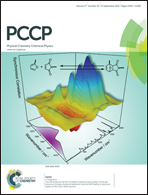Energy-dependent gas-phase fragmentation of fluorofullerene multiply charged anions (MCAs)
Abstract
Long-lived di- and trianions have been formed from fluorofullerenes in the gas phase by electrospray ionization. Fragmentation of multiply charged anions has been induced by multiple low-energy collisions. Two complementary dissociation experiments have been conducted. Firstly, unequivocal connectivity has been established between the precursor ion and the first and second generation of its product ions. Secondly, dianions have been studied in energy-resolved collisions, allowing the elucidation of the energetic demands of the dissociations. It was possible to study dianions with odd and even F numbers, possessing even and odd electron configurations, respectively. The fragmentation behavior is governed by the electronic stability of the anionic protagonists, in that ions with the less stable odd-electron configuration dissociate into species with the more stable even-electron configuration. Dianions with an odd electron count release an F˙ atom to turn into an even electron system while retaining the charge state. Dianions with an even electron count undergo a more energy demanding charge separation reaction (Coulomb explosion) into an F− anion and an even electron monoanion. The studied trianions behave accordingly. F2 loss is prominent only with monoanions within an even-to-even electron fragmentation cascade. The trianions are long-lived with lifetimes of at least 0.1 s.


 Please wait while we load your content...
Please wait while we load your content...